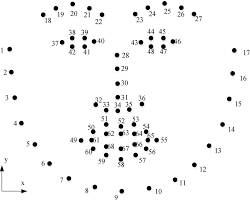- The paper demonstrates the effective integration of deep learning and computer vision to enable real-time drowsiness detection in drivers.
- Methodology employs CNNs with metrics like EAR and MAR, leveraging OpenCV and dlib for rapid facial landmark processing and alert generation.
- Results indicate robust blink and yawn detection, with potential improvements needed for lighting conditions and diverse facial features.
VigilEye: AI-based Real-time Driver Drowsiness Detection
The "VigilEye" system introduces an artificial intelligence framework for real-time detection of driver drowsiness, leveraging deep learning and computer vision technologies to enhance road safety by mitigating the risks associated with driver fatigue.
Introduction
Driver drowsiness remains a significant factor in road accidents, necessitating innovative solutions for early detection and intervention. VigilEye addresses this challenge by deploying a driver monitoring system that utilizes Convolutional Neural Networks (CNNs) to analyze facial landmarks for signs of drowsiness. By integrating the OpenCV framework for video processing, the system ensures real-time operation, making it viable for practical road applications.
Methodology
Data Flow and Algorithmic Design
The system's architecture employs a structured data flow mechanism, initiating with the capture of a live video stream. Facial features are identified using landmark detection algorithms, which serve as inputs to CNNs trained to recognize drowsiness patterns. Critical facial metrics, such as Eye Aspect Ratio (EAR) and Mouth Aspect Ratio (MAR), are computed to assess the driver's alertness level.

Figure 1: Data Flow Diagram illustrates the sequential steps of video capture, facial feature extraction, and drowsiness detection.
Drowsiness Detection Algorithm
The algorithm employs dlib and OpenCV libraries to manage face detection and landmark prediction, processing each frame to calculate EAR and MAR. These metrics are benchmarked against empirically determined thresholds to detect deviations indicative of drowsiness. Detected conditions trigger system alerts to the driver, aiming to forestall accidents.
Results
The system's outputs in various states—such as active state, blink detection, yawn recognition, and face alignment—display its capacity to detect drowsiness accurately.
Blink and Yawn Detection
The system rigorously tracks blink frequency and yawn occurrence as primary indicators of fatigue. Increased blink rate or pronounced yawning results in active alerts to notify the driver of potential drowsiness.

Figure 2: EAR and MAR calculation detail the process for detecting blink frequency and yawns based on predefined thresholds.
Facial Landmark and Alignment Monitoring
Facial landmarks (68 points) are pivotal in maintaining the accuracy of drowsiness detection, providing a reference framework for continuous assessment. The system adjusts for variations in driver posture or head orientation to ensure reliable detection across diverse conditions.

Figure 3: 68 facial landmarks utilized in tracking facial cues and expressions to ascertain drowsiness.
Discussion and Future Enhancements
Implications of the Research
VigilEye's implementation in vehicles presents a substantive augmentation to driver safety technologies, aligning with industry trends toward intelligent transportation systems. The capability to deploy with standard hardware underscores its practicality.
Limitations and Recommendations
Current system constraints involve sensitivity to lighting conditions and varied facial characteristics, suggesting avenues for optimization. Future enhancements could include integrating additional sensors and implementing personalized adaptive models for improved system performance across broader scenarios.
Conclusions
VigilEye demonstrates the effective integration of AI and computer vision techniques in the development of a real-time driver monitoring system capable of detecting and pre-empting driver drowsiness. While the paper confirms its high accuracy, further research and system refinements are necessary to accommodate environmental variability and ethical considerations concerning driver monitoring.
This paper sets a foundation for subsequent exploration and application of AI-driven solutions in automotive safety, emphasizing its potential to significantly reduce the impact of driver fatigue on road safety.




